When you go to a store and receive excellent service from a front-line employee who exceeds all of your expectations, do you credit the positive interaction to a lucky encounter with a singular, wonderful employee who loves their job? Or do you extend your favor to the entire organization, thinking, “Wow! This company must really treat their employees well because they care about their customers?” Is there a difference? If that employee were a member of your organization, what would you want the assumption to be?
While either or both of these answers could be true, there IS a difference. A content, satisfied employee who largely enjoys their job can provide a great user experience without being fully committed to their organization – their goals are their own. An ENGAGED employee is invested in doing a good job and achieving positive outcomes for the company because the company has seen to it that its goals are aligned. The more an employee is engaged, the more successful the organization will be as a whole. Businesses should do all they can to ensure that they have more than just happy workers, as happiness is a dynamic and changing state. Instead, organizations should strive to assemble a committed, engaged workforce. They should do it not only for the morale of the working environment but because employee engagement is directly linked to growth and profit.
Some employees will come to your organization already intrinsically motivated. They will excel within the parameters that you have set, having everything to do with their existing goals, and any ‘incentivization’ plans you have in place will only enhance a previously existing drive. However, as a leader, you should assume that employees need external motivation. As such, most will not devote their discretionary effort to the performance of their duties or the overall success of the company without the company giving something in return.
So, what can you do to effectively increase the level of employee engagement in your workforce?
Start on Day One (Or Before)
Begin your retention and engagement strategy at the very beginning of the recruitment process. Make sure that your recruitment materials, interview questions, desired qualities, and the way applicants are treated are all in alignment with organizational culture and engagement strategy.
Model from Leadership
Demonstrate commitment to engagement through modeling the behaviors and setting the example you wish for employees to emulate.
Facilitate Two-Way Communication
Involve employees in important conversations. Solicit feedback, value the input provided, and trust that engagement will follow.
Empower Employees and Set Them Up for Success
Motivate independent thinking through job autonomy. Allow employees to practice job crafting to get the desired result. Endeavor to manage the result, not the process. Ensure employees have all physical, material, informational, and financial resources necessary to do their jobs effectively.
Supply Development Plans and Advancement Opportunities
Promote the continued learning of employees and ensure they stay current/relevant. Expand their knowledge base. Furnish continual opportunities for development and advancement.
Incorporate a Strong Feedback System
Institute formal annual or semi-annual formats as well as less formal, real-time formats. Create a mechanism in which feedback is collaborative, and employees are encouraged to articulate their thoughts on progress.
Create and Track Metrics
Institute performance metrics that are aligned with organizational engagement goals. Establish a clear link between individual performance and incentives for the employees and supervisors.
- Construct an Aligned Culture. Align the mission, vision, and metrics of the organization with its cultural identity. Assure that within the organization, values and culture are not just espoused traits but are demonstrated through practice on a daily basis.
- Focus on High Performers. Orient engagement efforts so that high-performing employees are rewarded.
Embedding Engagement as a Philosophy and Culture
Once engagement as a philosophy is embedded into the culture of your business, and a significant level of employee engagement has been achieved, your company will see sustainable benefits, including:
- Increased retention – Engaged employees feel as though they are an important and integral part of their organization. They feel their needs are being met, so they are content in both their roles and their place in the company. As a result, voluntary attrition does not happen frequently, and employees exhibit higher levels of fidelity for longer periods of time.
- Increased customer satisfaction – Increased retention creates longevity, and long-time employees stay familiar with all company products and services. Their ability to deliver a quality, knowledgeable experience is due to their investment in continual learning and growing within the company. Customers feel valued, and positive word of mouth and loyalty for your business increases.
- Higher productivity levels – Engaged employees enjoy being at work and contributing to their company’s bottom line. Because satisfaction is high, absenteeism and turnover are low, and employees are willing to dedicate discretionary effort to the success of the organization. The general contentment creates an environment where workplace targets and goals are achieved faster and more efficiently.
Putting It All Together
Companies are beginning to understand the direct link between employee engagement and the organizational bottom line. It is a valuable metric, and the overall gains to your company make it a goal worth investing in. Companies need to do the work of ensuring their employees have a purpose, both in their position and in the organization at large. Your business will be all the better as a result!
You can download the free Employee Engagement Toolkit here for more information.





